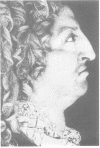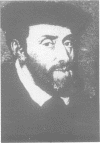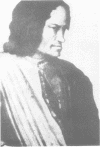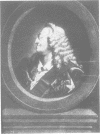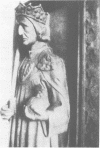Abstract
Mandibular prognathism is assumed to be a polygenic trait in the vast majority of cases. In a few families, this phenotype and perhaps a syndrome with a broader spectrum of facial anomalies seems to be determined by a single dominant gene of very low frequency (McKusick No *176700). The phenotype is known to have occurred independently in several European noble families. We constructed a pedigree comprising 13 of these families with 409 members in 23 generations in which mandibular prognathism has been segregating. Obviously, the presumed dominant gene is not fully penetrant in the heterozygous state. Pedigree analysis using the Elston-Stewart algorithm yields a maximum likelihood estimate (MLE) of p = 0.955 (SE 0.038) of the penetrance parameter.
Full text
PDF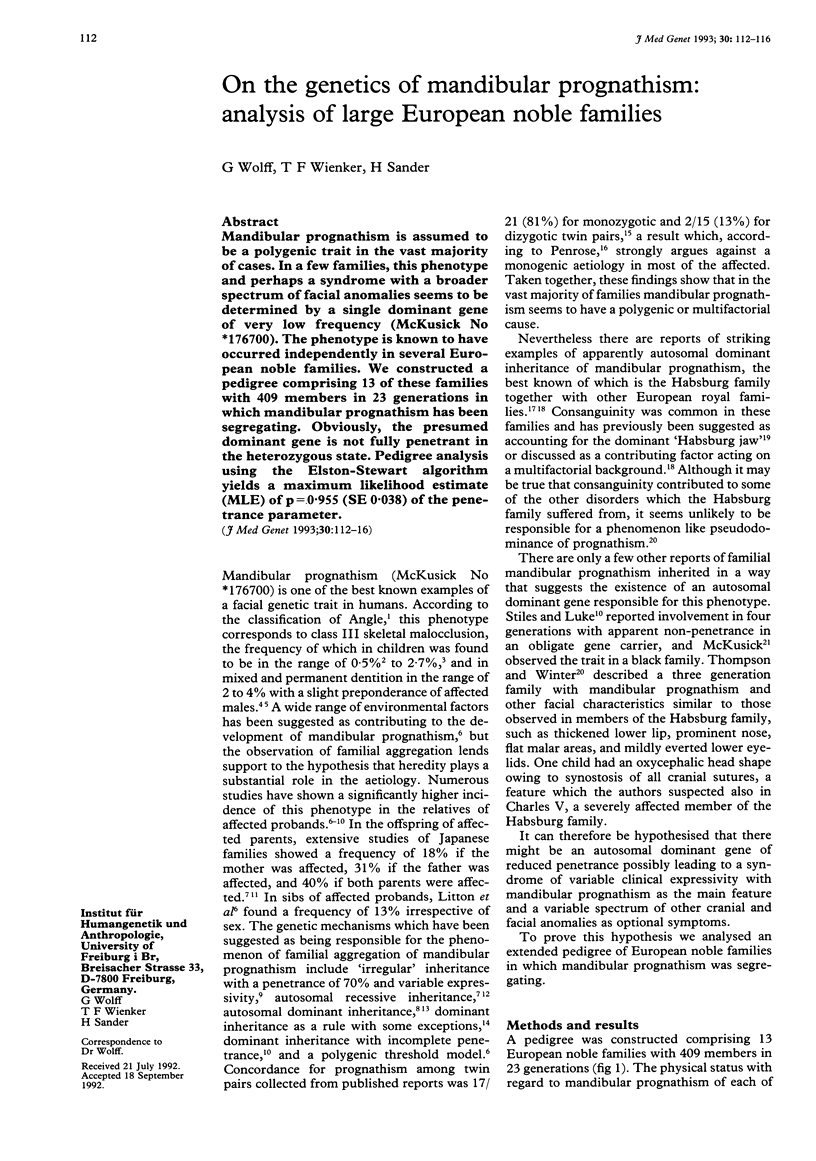
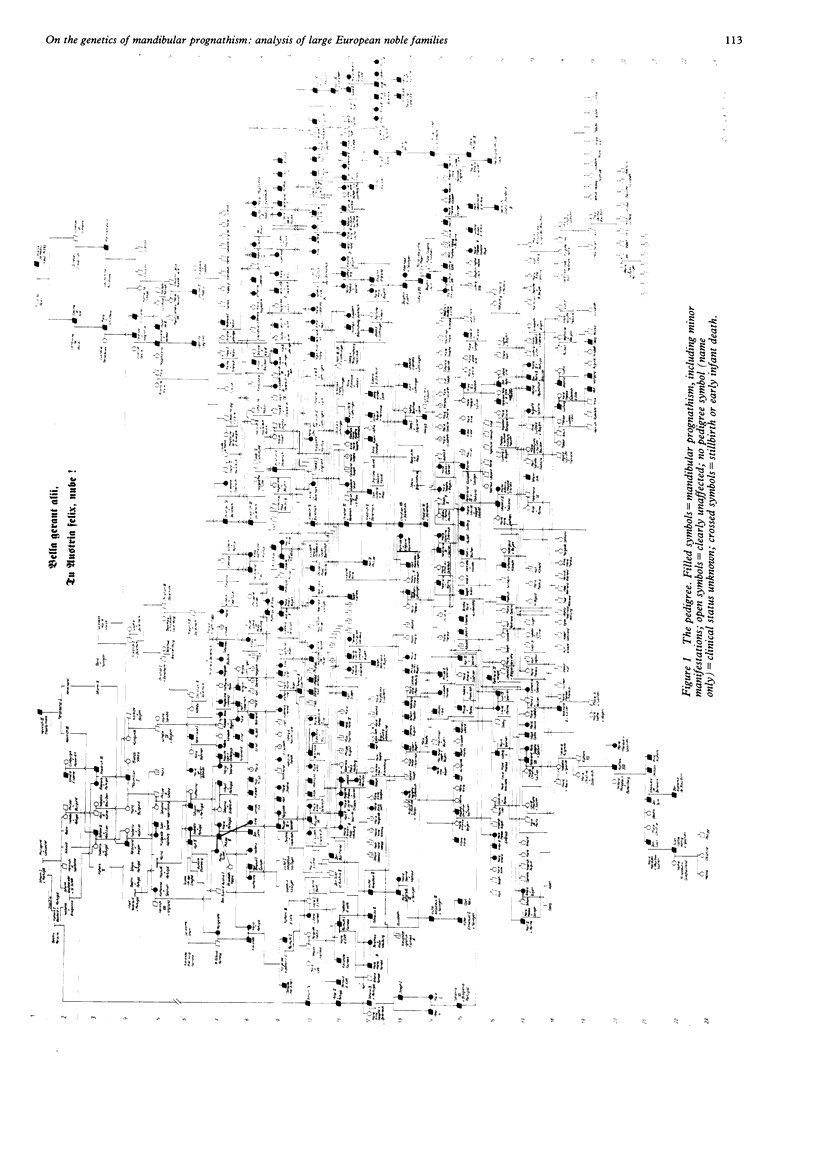
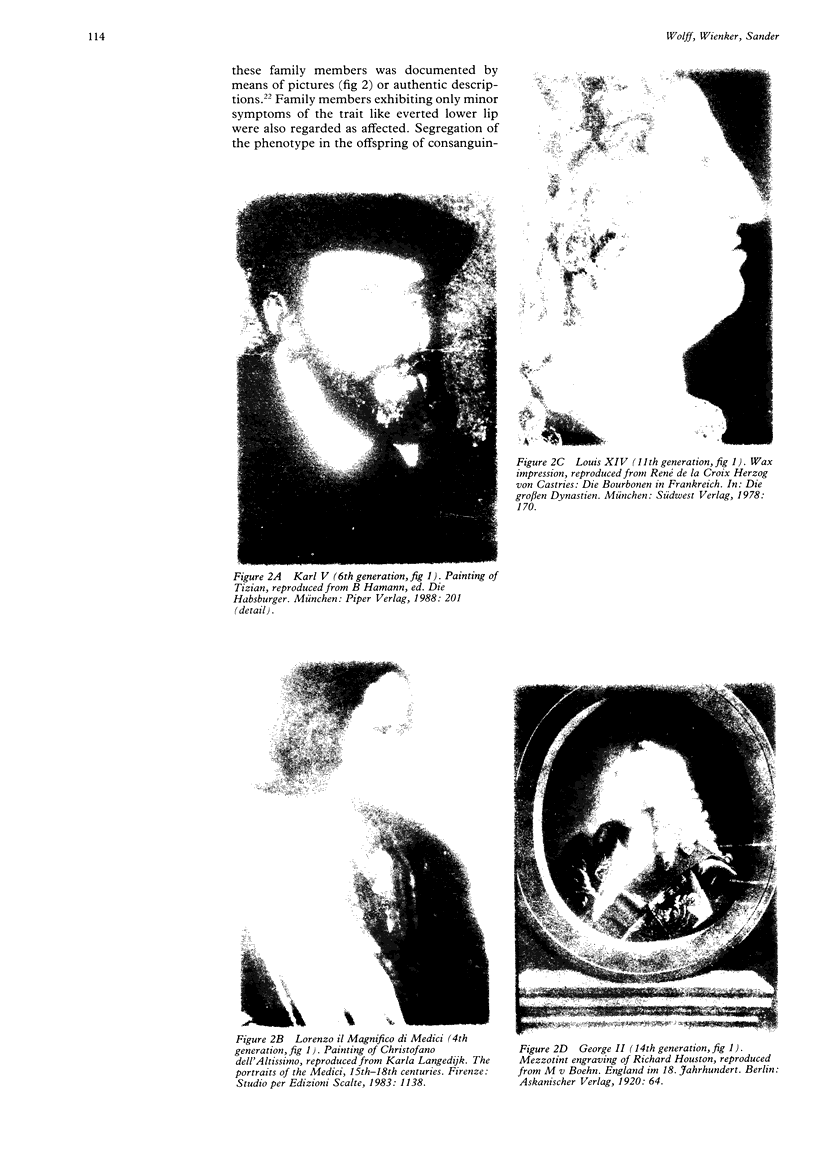
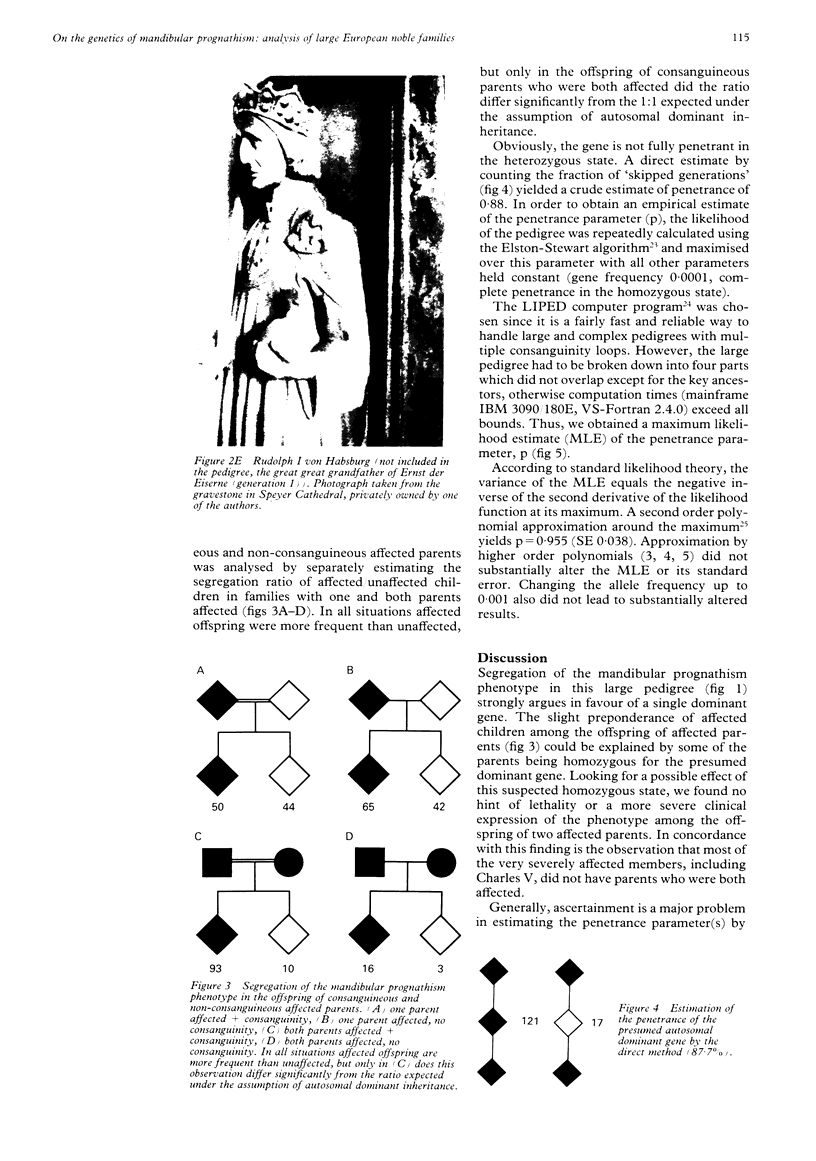
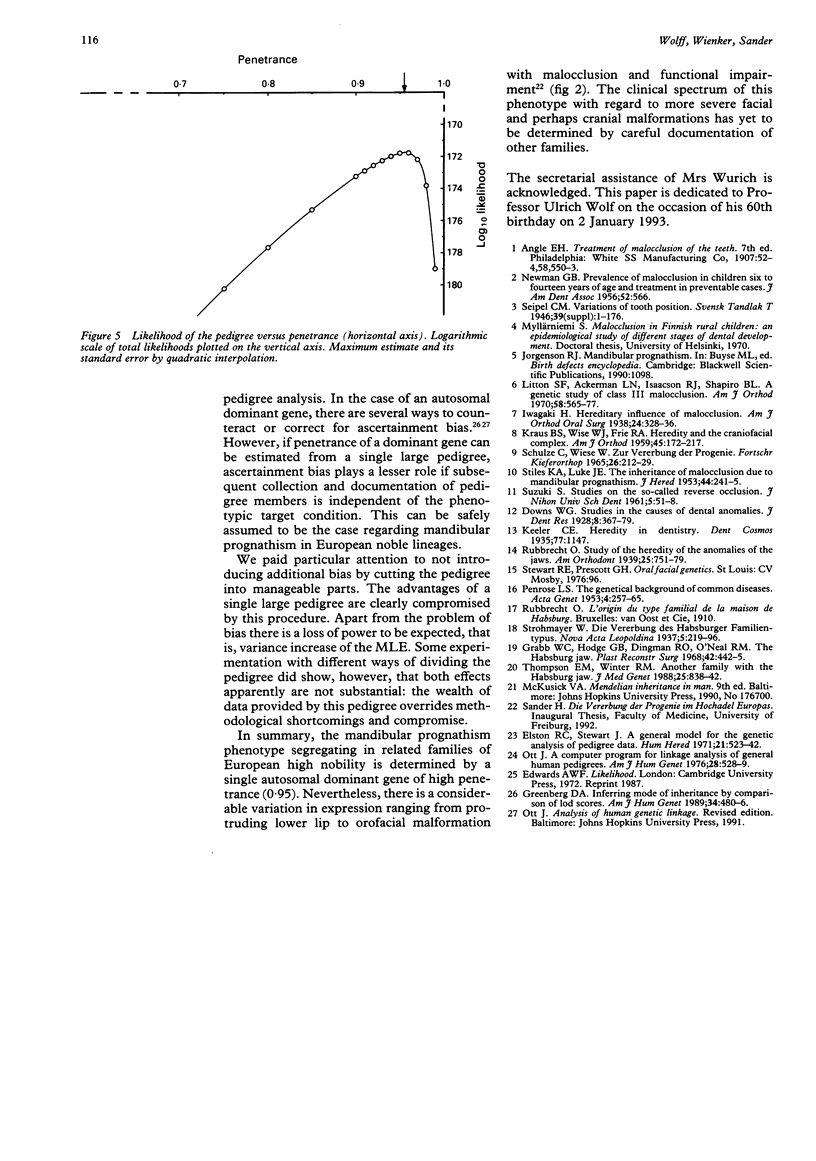
Images in this article
Selected References
These references are in PubMed. This may not be the complete list of references from this article.
- Elston R. C., Stewart J. A general model for the genetic analysis of pedigree data. Hum Hered. 1971;21(6):523–542. doi: 10.1159/000152448. [DOI] [PubMed] [Google Scholar]
- Grabb W. C., Hodge G. P., Dingman R. O., Oneal R. M. The Habsburg jaw. Plast Reconstr Surg. 1968 Nov;42(5):442–445. [PubMed] [Google Scholar]
- Greenberg D. A. Inferring mode of inheritance by comparison of lod scores. Am J Med Genet. 1989 Dec;34(4):480–486. doi: 10.1002/ajmg.1320340406. [DOI] [PubMed] [Google Scholar]
- Litton S. F., Ackermann L. V., Isaacson R. J., Shapiro B. L. A genetic study of Class 3 malocclusion. Am J Orthod. 1970 Dec;58(6):565–577. doi: 10.1016/0002-9416(70)90145-4. [DOI] [PubMed] [Google Scholar]
- NEWMAN G. V. Prevalence of malocclusion in children six to fourteen years of age and treatment in preventable cases. J Am Dent Assoc. 1956 May;52(5):566–575. doi: 10.14219/jada.archive.1956.0092. [DOI] [PubMed] [Google Scholar]
- Ott J. A computer program for linkage analysis of general human pedigrees. Am J Hum Genet. 1976 Sep;28(5):528–529. [PMC free article] [PubMed] [Google Scholar]
- PENROSE L. S. The genetical background of common diseases. Acta Genet Stat Med. 1953;4(2-3):257–265. doi: 10.1159/000150748. [DOI] [PubMed] [Google Scholar]
- Thompson E. M., Winter R. M. Another family with the 'Habsburg jaw'. J Med Genet. 1988 Dec;25(12):838–842. doi: 10.1136/jmg.25.12.838. [DOI] [PMC free article] [PubMed] [Google Scholar]



